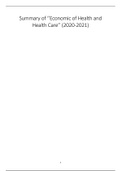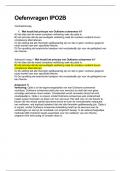Summary
Summary of ''Economics of Health and Health Care'' ()
- Course
- Institution
A complete summary (except guest-lecture 7) of both the lectures and exercise lectures of the course. It is a lot of pages because everything is in it, but you can easily filter relevant information. Moreover, it is written out and not just a copy of the slides. Hopefully, it will help you understa...
[Show more]




